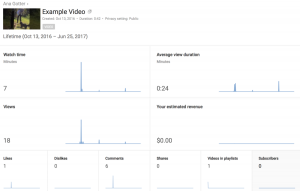By Emily Guy Birken
If you forgot about tax filing until you were clearing up the matzo crumbs, stray Easter eggs, or winter wardrobe this week, there’s no need to panic. The IRS allows you to take a six-month extension on filing your taxes—although you still have to pay what you owe by Tax Day.
Here’s what you need to know about the automatic tax filing extension.
Applying for an automatic extension
American taxpayers can get an automatic extension of six months on filing previous year’s return using Form 4868, Application for Automatic Extension of Time To File U.S. Individual Income Tax Return.
You must turn in Form 4868 by the tax filing deadline of April 18, 2023—and you can file it electronically using IRS Free File. Upon filing this form, you will receive a six-month extension for filing your 2022 tax return. Your new due date will be October 16, 2023.
Form 4868 is relatively simple to fill out (especially compared with Form 1040 and Schedules A-D). You simply need to provide your name, address, and Social Security Number, as well as your estimated tax liability for 2022 and the amount you have already paid. The form asks you to subtract your total 2022 payments from your estimated liability to calculate your balance due.
This extension is only for doing the work of filing your taxes, however. You’re still required to pay any taxes you owe by April 18, or else you will owe interest on the unpaid portion of your taxes, and you may also be charged penalties.
As long as you have filed for an extension, the penalty is relatively low: It equals half of 1% of the tax owed, charged for each month (or partial month) the balance remains unpaid. That means for every $1,000 you leave unpaid, you’ll owe $5 in penalties. (And note: If you owe $1,000 or less, the IRS does not charge you a penalty).
Estimating your tax liability
While Form 4868 does not require the kind of deep excavation of your previous year’s finances that filling out the 1040 does, estimating your previous year’s tax liability can be a bit of toughie. This can feel fraught, considering the IRS includes this warning on Form 4868: “Make your estimate as accurate as you can with the information you have. If we later find that the estimate wasn’t reasonable, the extension will be null and void.”
Yikes.
So, how do you go about “reasonably” estimating your tax liability?
If your income was basically the same in 2022 as it was in 2021, you will probably owe about the same amount. Check the total tax you owed in 2021 by looking on line 24 of your 2021 tax return. Subtract that amount from the total taxes you have already paid in 2022 (such as income your employer withheld from paychecks or any quarterly estimated taxes you paid) and any tax credits you qualify for. The number you come up with should be a reasonable estimate of the balance you owe for your 2022 taxes.
Alternatively, you could calculate your tax liability with the IRS 1040-ES 2022 Estimated Tax Worksheet. This is a long worksheet, but it will help you accurately determine your liability. Using this worksheet is especially helpful if you need an extension because your income or circumstances changed drastically in the past year.
Paying the balance you owe
If you can’t afford to pay the full balance, you can still qualify for the extension. The IRS asks that you pay as much as you can when you turn in Form 4868. However, you can expect to pay the 0.05% penalty on your unpaid balance.
Here’s the good news: As long as 90% of your total tax liability is paid by April 18, and the remaining balance is paid when your file your return, the IRS won’t charge you a late payment penalty.
Getting state-level extensions
Of course, Uncle Sam may not be the only one you owe taxes to. If you live in a state with income tax, you may need to request an extension for that income tax return, as well.
In many states, applying for a federal tax extension automatically grants you an extension for your state taxes, as well, while some states require a separate form to receive a state level extension. And all states with income tax require you to make a tax payment of any balance owed by the spring tax deadline if you need an extension. You can find exactly what your state requires here.
A day late, but not a dollar short
Even if you haven’t given a thought to your taxes until just now, you can breathe a sigh of relief. The IRS makes it (relatively) easy to request an extension for filing your taxes—as long as pay any taxes you owe on time.
Emily Guy Birken is a Milwaukee-based personal finance writer. Her books include The 5 Years Before You Retire, Choose Your Retirement, Making Social Security Work for You, and End Financial Stress Now.

(13)







